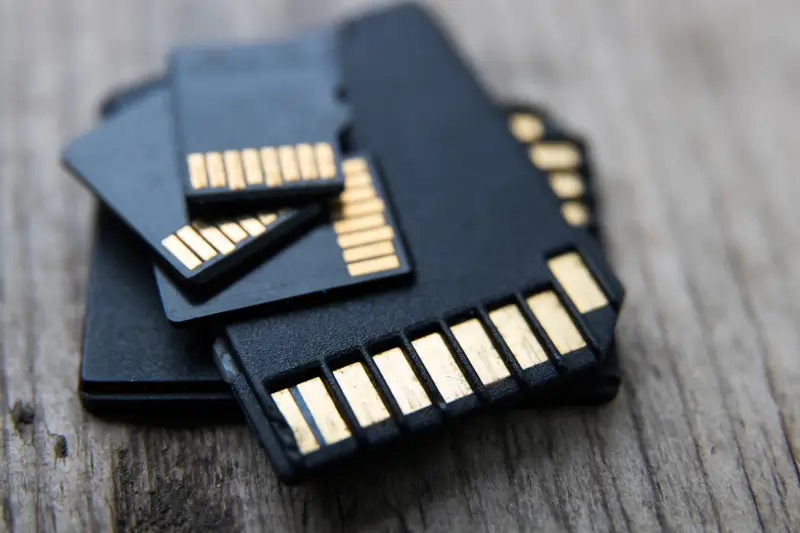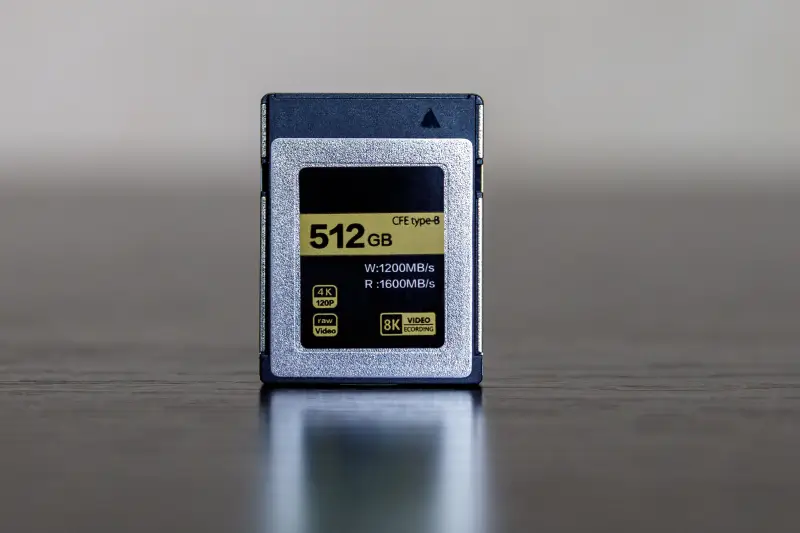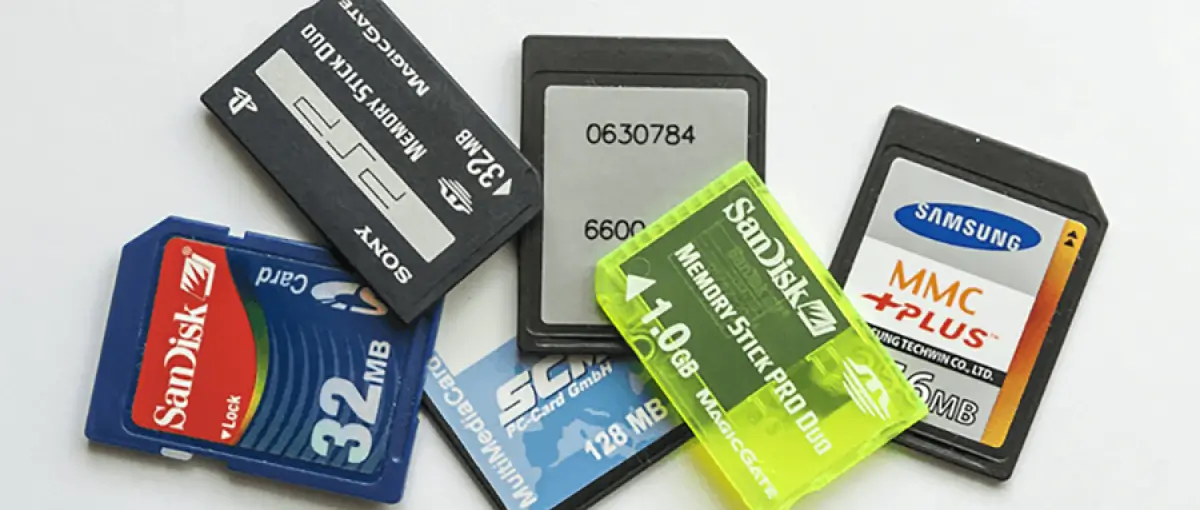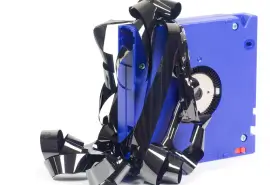Memory cards are a storage device commonly used in consumer electronics. Their tiny physical dimensions, resilience, and persistent storage make them ideal media for portable devices. Initially, companies and consumers sought a more compact, responsive alternative to floppy disks. However, the cards quickly proved useful across various applications, from digital media and gaming to mobile devices.
Memory cards can now exceed 1 TB, but that was not always the case. Our experts take a closer look at the history of memory cards and explain how they have evolved.
How Do Memory Cards Work?
Media cards use flash memory to store data without moving parts or a constant power supply. Flash memory has a dense grid of cells for more storage space and rapid access to data. Each cell features a single transistor that is manipulated through electrical processes to represent binary data. The transistor contains a floating and control gate. The floating gate is a conductive layer that traps electrons during programming. The control gate modulates the flow of the electrical current of the floating gate. This charge represents the cell’s binary value (0 or 1). To erase data, a controller on the memory card applies high voltage to discharge all electrons from a block of cells.
As a result, memory cards have fast read/write speeds, making them an excellent solution for external storage.
Timeline of Flash Memory and Media Cards
Here are the most important milestones for flash memory and media cards:
Invention of Flash Memory
Engineer Fujio Masuoka helped develop the logic gates that form the basis of flash memory while working for Toshiba. He invented NOR flash in 1984, allowing random access to stored data and speeding up read times. In 1987, he presented NAND flash, leading to even greater storage capacities and faster program/erase cycles. His flash memory concepts transformed the industry. This architecture launched the next generation of data storage technology, leading to memory cards and, eventually, solid-state drives (SSDs).
First Commercial Memory Cards
The PC Card became one of the first memory cards sold to the public. It debuted in the late 1980s and gained traction in the early 1990s. PC Cards were designed as supplemental storage for laptops via an expansion slot. In the following years, SanDisk introduced the CompactFlash (CF) format, Toshiba offered SmartMedia cards, and Sony produced the Memory Stick. These cards began to target the removable media market.
Rise of SD Cards

In August 1999, SanDisk, Panasonic, and Toshiba combined to release a new format for memory cards. Secure Digital (SD) cards had a smaller footprint than many prior formats. Their size made them perfect for popular electronics like digital cameras, camcorders, gaming consoles, and more. Soon, SD cards became the standard storage for portable devices. They reshaped consumer electronics and served as a platform for future inventions. Today, memory cards are still informally known as SD cards.
microSD and Mobile Devices
The SD Association (SDA) kept improving upon the initial SD card into the 21st century. In 2005, the SDA adopted standards for an even smaller form factor. The microSD card became a staple of game-changing tech in the 2000s, including smartphones and tablets. These handheld devices often included slots to expand their storage space with an ultra-compact microSD card. The form factor is still widely used in cameras, drones, mobile devices, and Internet of Things endpoints.
Advancements in Capacity and Performance
Flash memory technology continued to evolve over the next decade. The SDHC (2006), SDXC (2009), and SDUC (2018) standards increased capacities far beyond the 2 GB limit of an SD card. As mentioned, modern memory cards can surpass 1 TB. In addition, updated interfaces like Ultra High Speed (UHS) boosted read speeds. High UHS ratings, such as UHS-II and UHS-III, indicate better performance and transfer rates. Together, these advancements made high-resolution workflows much smoother.
Newer Formats and Specialized Usage

Next-gen formats have been established and maintained for specific fields as memory cards progress. The CompactFlash Association (CFA) introduced the CFexpress card in 2017. CFexpress cards are an evolution of the CompactFlash standard. The improved card uses modern protocols for faster speeds and file transfers. They are frequently used in high-end cameras and demanding environments that require extensive data logging, such as self-driving cars.
Future of Memory Cards
While some write off memory cards as legacy media, they remain part of the storage landscape. Western Digital announced they would release a 4 TB memory card in 2025 under their SanDisk brand. They also have plenty of potential as technology evolves and the demand for data storage grows. SDUC formats support cards up to 128 TB, and high-speed standards like CFexpress can reach 4,000 MB/s. Further upgrades could provide more performance for intensive tasks like data logging or real-time editing.
For that reason, memory cards should continue to enjoy use in action cameras, drones, and edge computing.
Impact of Memory Cards on Digital Storage
Flash memory and SD cards changed the history of the storage industry. These cards helped create some of the most beloved electronics of all time and put portable devices in our hands. They led to the development of SSDs and should serve a role in data storage in the future.
Secure Data Recovery has been the industry leader in SD card data recovery since 2007. Our experts specialize in reversing data loss on damaged or defective memory cards. While these storage devices are durable, they are not immune to failures. Call 800-388-1266 to speak with us and reclaim lost data.








